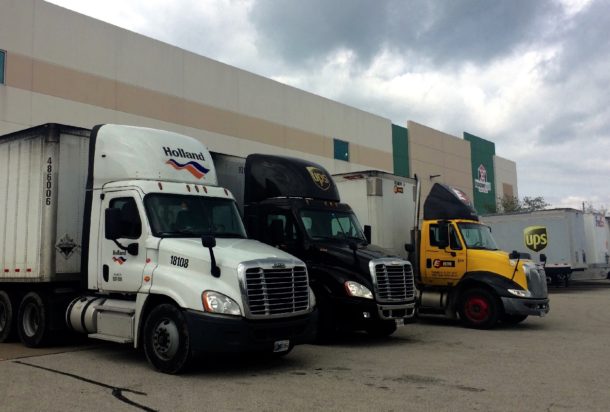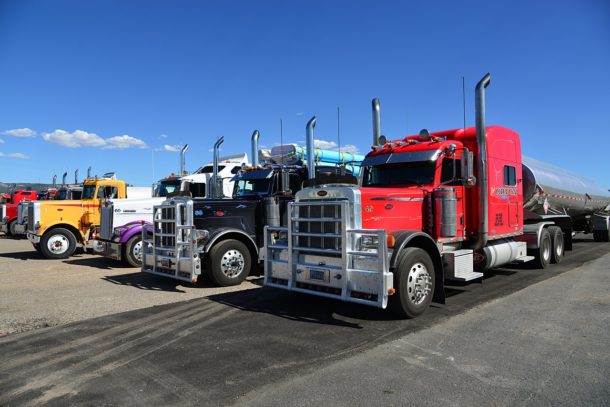Note: The actual clutch in an 18 wheeler is very complex with a lot of moving parts. I’m going to oversimplify it here in order for you to properly visualize the relationship between the pedal and the stick.
Think of a clutch in it’s simplest form, as basically two spring-loaded plates covered in a friction material that transfers the power from the engine to the transmission which ultimately turns the wheels.
When you push the clutch pedal down you separate the two plates and disengage the engine from powering the drive wheels.
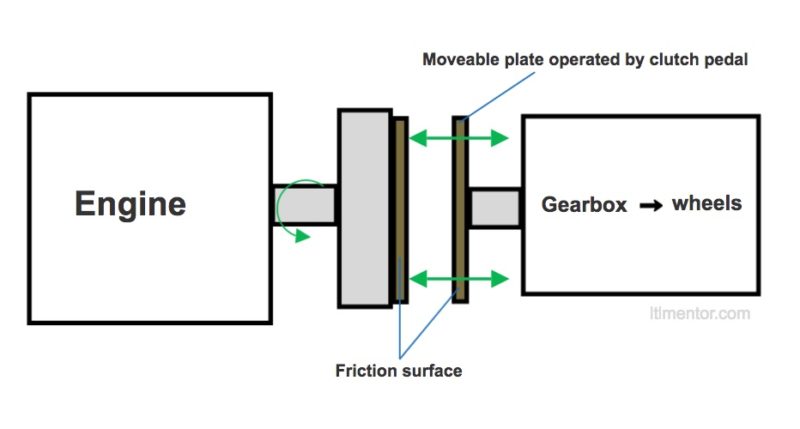
There are two things I want you to know about the clutch pedal itself.
- The only time the clutch pedal should be pushed fully to the floor is when you are at a complete stop and start over from neutral. This engages the clutch brake, and engaging the clutch brake is not desired while traveling at speed.
- Somewhere between fully released and fully depressed there is a spot where the two clutch plates make contact on the way up and separate on the way down. This point in the pedal’s path is a place you should become familiar with. I will refer to this as the “Contact Point”. This point will vary slightly from truck to truck. Some trucks it will be near the bottom; some trucks it will be near the top. It depends on how the clutch is adjusted.
Most of the time it will be in the upper half of the pedal’s path. Feel the contact point by starting out in a low gear with the clutch pedal fully depressed.
Slowly allow the clutch pedal to raise until you feel the engine engage the drive tires and the truck starts to move. This is the point where the two plates make contact. Or, the point where the engine connects with the drive tires.
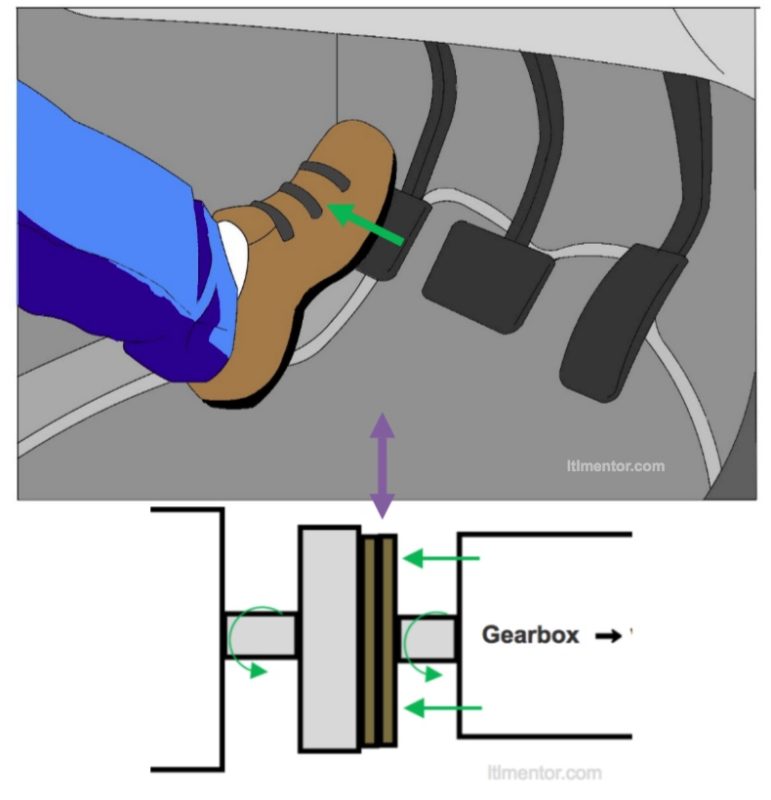
Push it down just past this point and you will feel the engine disengage from the transmission.
This point is as deep as your pedal needs to go when shifting. Don’t worry, you won’t have to make a conscious effort to precisely find this spot while shifting. The stick will tell you when you’ve reached the contact point. I will explain…
The myth of Rhythm and Tempo:
I have had students try to find some elusive “beat” as if they are playing a bass drum with their left foot and trying to throw the stick towards the next gear at just the right moment. ‘PUMP – PUMP – THROW’… and when it doesn’t work they try a different beat.
Double Clutching is really NOT about a specific rhythm or tempo. I know there are experienced drivers out there teaching that it is. But that is misleading and completely false. Not that they haven’t developed a certain rhythm, but I would argue it’s not as important as they are making it out to be. And it most definitely should not be a student’s focus point.
It is really about knowing the relationship between the pedal and the stick, combined with the proper RPMs.
Without knowing the relationship between the pedal and the stick, rhythm and tempo won’t help you.
When you know the relationship between the pedal and the stick you can do it with a slow tempo, or you can do it with a fast tempo. And it still works!
Here is the most effective way to visualize the relationship between stick and pedal in your mind.
First, imagine some sort of gate separating neutral from every gear as in the following image.
Think of these as gates that need to be opened with the clutch pedal.
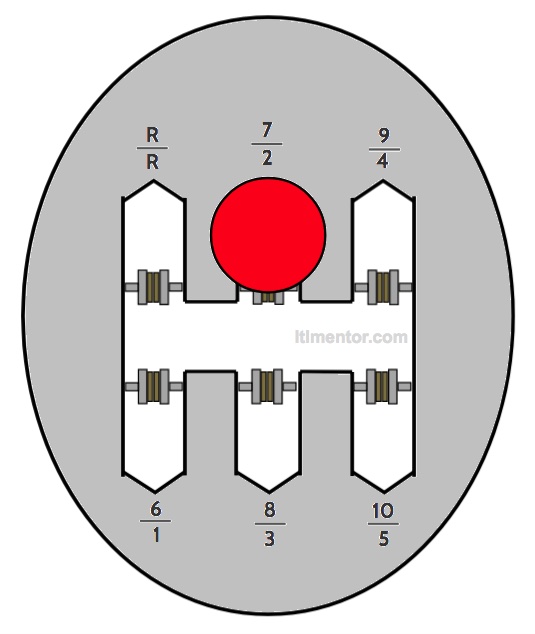
Apply a light steady pressure to the shifter.
This is very important!
The key to making this work smoothly and eliminating the need for timing is to apply a light steady pressure on the stick as you are accelerating. This ensures that the stick is leaning on the gate.
Too much pressure and you can force it through the gate. Apply just enough as you are accelerating so that the stick is leaning against it. Your acceleration will create torque that will help hold the truck in gear.
When you press the clutch pedal down and take your foot off of the fuel pedal the gate will open and the stick will fall through. When you feel the stick pass through the gate you can gently let the clutch pedal back up.
Note: You must go through the formality of letting the clutch pedal back up, leaning against the next gate and clutching a second time to get it into the next gear. Hence the term “double” clutching.
Apply a light pressure to the next desired gate and repeat before the RPMs drop below the bottom part of the “range”.
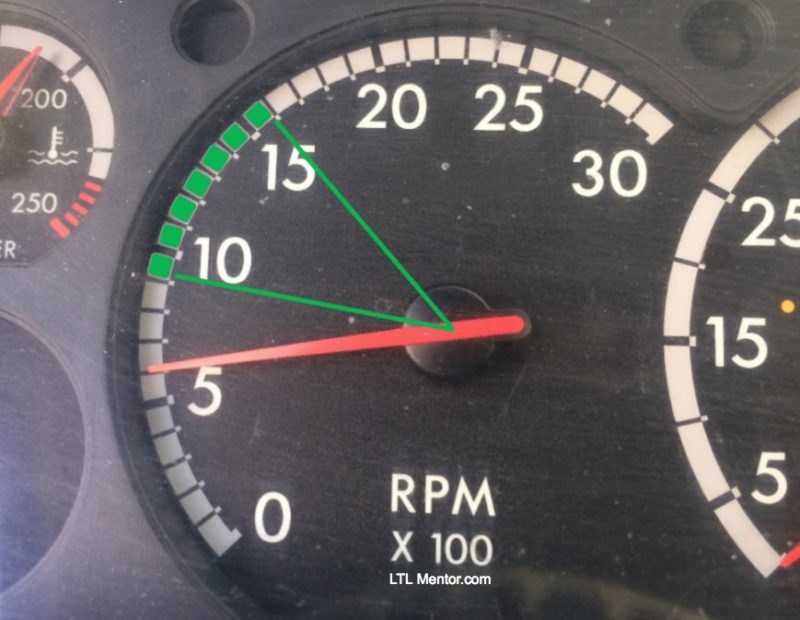
It is important to know the acceptable RPM range for your truck.
*(If you are not familiar with the importance of keeping the RPMs within an acceptable range, click here.)
The application of pressure is a very subtle thing. It is a tiny but important detail. When you apply a light pressure against the “gate” the stick will fall through as soon as the clutch pedal opens it. This eliminates the need for consciously trying to time the sequence.
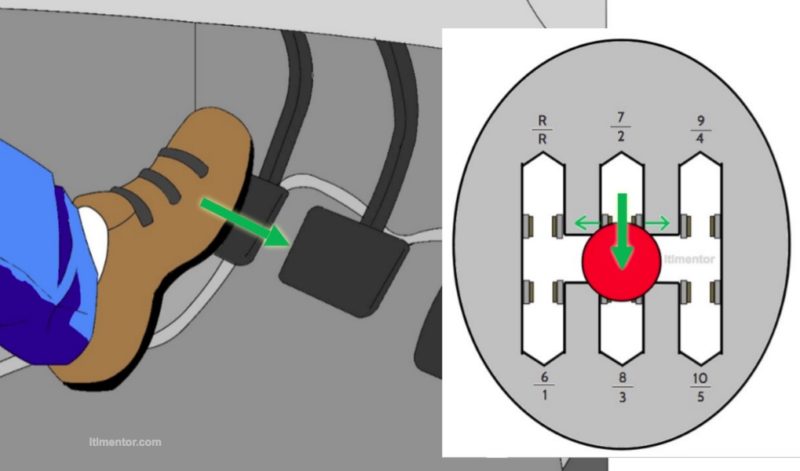
In Summary:
Stick leans on the gate.
Clutch pedal opens the gate.
Stick falls thru.
Gently allow the clutch pedal back up.
Repeat.
More specifically:
- Accelerate until the RPMs approach the top of the range.
- Apply a light steady pressure against the “gate” with the stick.
- Push the clutch pedal down until the stick falls through the gate, then gently allow the pedal to raise back up.
- Apply a light steady pressure to the next gate.
- Clutch again, and the stick will fall through.
- Accelerate until the RPMs reach the top of the range and repeat as needed.
Note: RPMs are very important. Watch your tachometer when you are first learning this. There is an element of timing to this. It must be put into the next gear before the RPMs drop below the bottom of the range. Many students make the mistake of waiting too long before entering the next gear.
There should be a slight pause in the neutral area, but you don’t have time to wiggle the stick to make sure it is in neutral. If the RPMs drop below the bottom part of the range you will hear grinding.
The tachometer will act as your timer.
Take it out of gear at the top, and put it into the next gear near the bottom— But before it drops below the bottom.
If you found this post helpful please share it on social media with your fellow students. Thanks in advance!
Good Luck!


